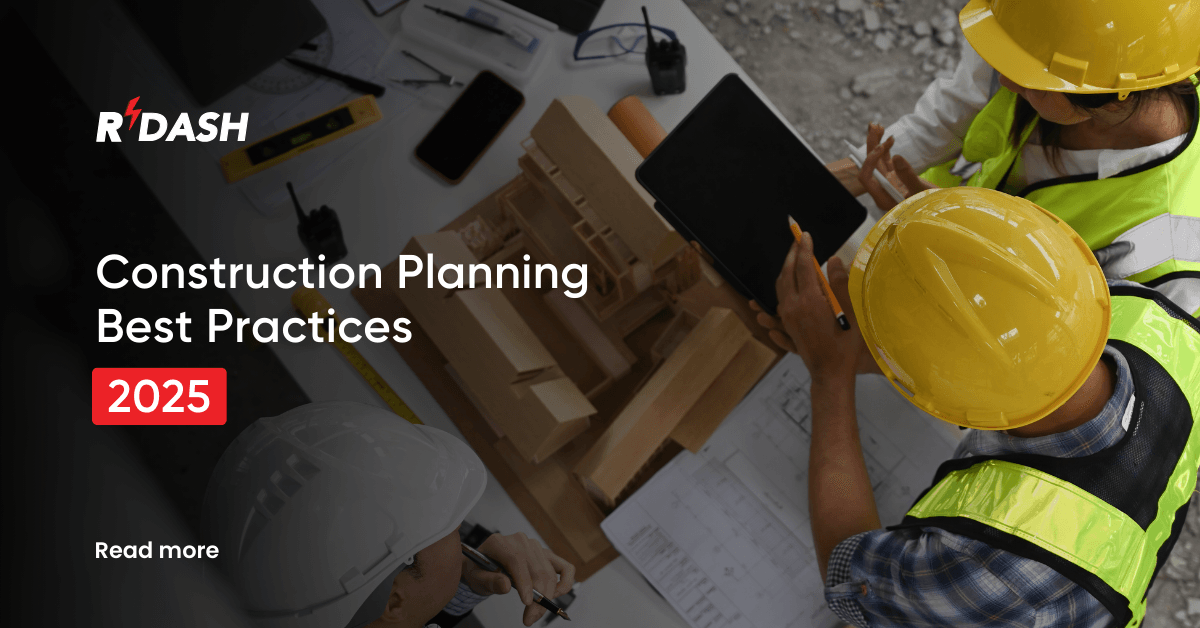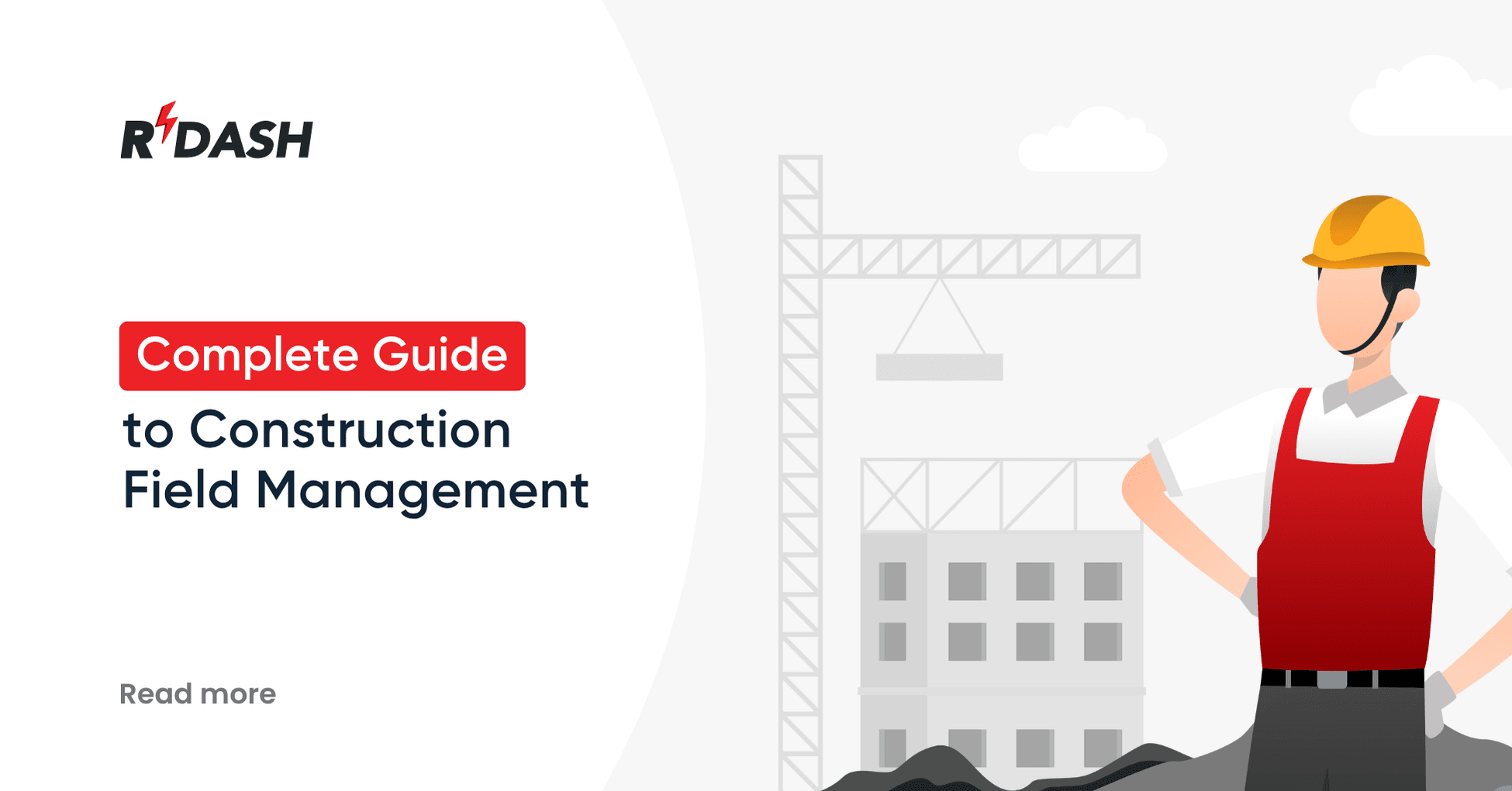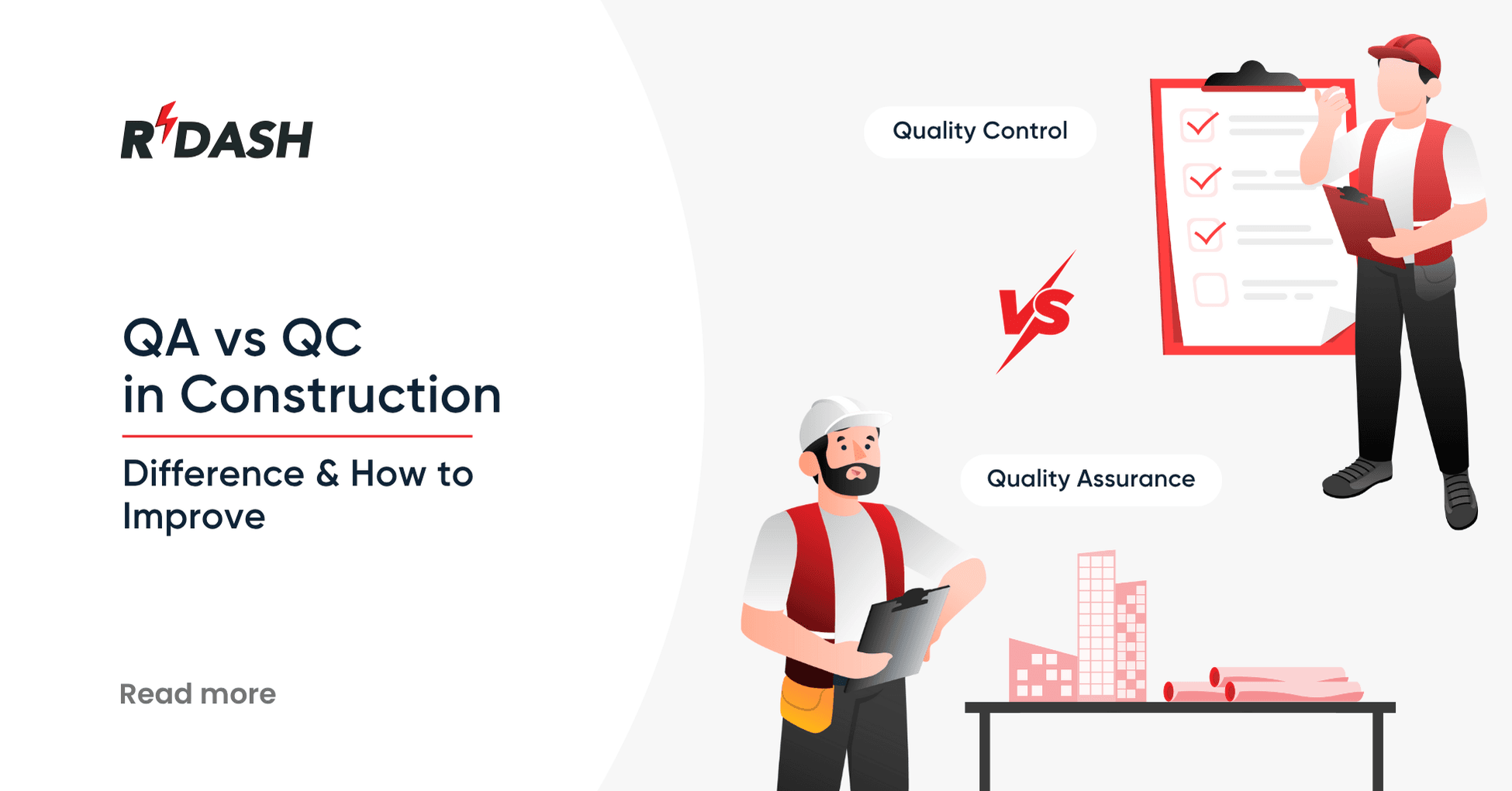What is Construction Project Planning?
Construction planning is the process of outlining the steps, resources, timelines, and strategies needed to successfully complete a construction project. It involves defining project goals, setting a structured workflow, assigning tasks, and ensuring that everything runs efficiently from start to finish. Proper planning helps prevent delays, reduces costs, and ensures smooth coordination among teams.
Construction planning steps
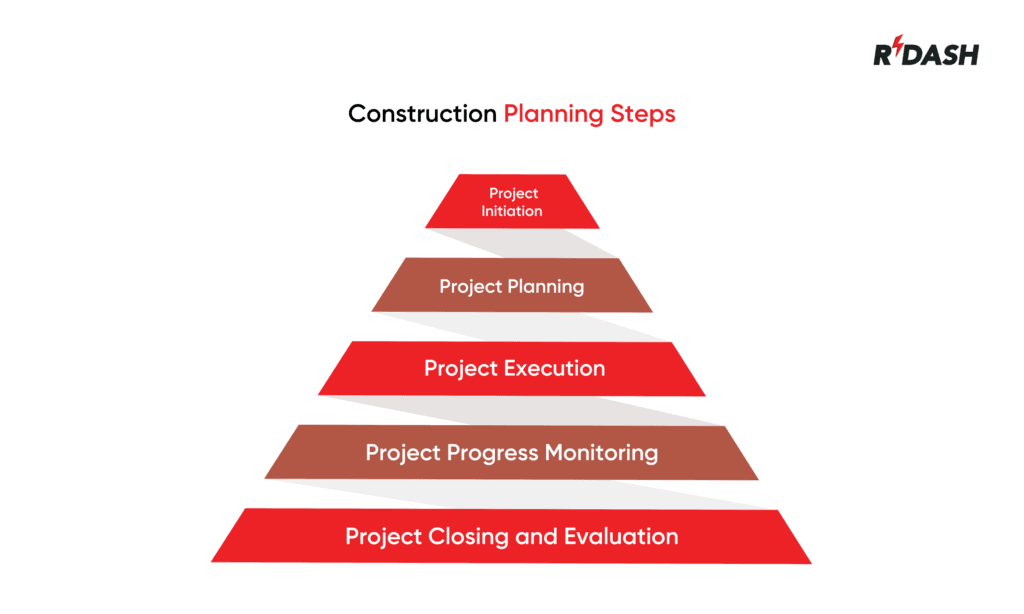
Step 1: Project Initiation
The first step in construction planning is identifying the project scope, objectives, and feasibility. This includes defining the purpose of the project, setting a budget, and conducting feasibility studies. During this phase, stakeholders assess risks and determine whether the project is viable.
Step 2: Project Planning
Once the project is approved, detailed planning begins. This phase involves creating timelines, allocating resources, setting up procurement strategies, and finalizing contracts. Key documents like blueprints, permits, and schedules are prepared. A well-structured plan helps minimize errors and optimize productivity.
Step 3: Project Execution
This is where the actual construction work begins. Teams start executing the project according to the plan, following the assigned tasks and deadlines. Contractors, engineers, and workers collaborate to ensure smooth progress. Regular site meetings and coordination with suppliers and subcontractors play a crucial role in keeping everything on track.
Step 4: Project Progress Monitoring
Monitoring progress is essential to ensure that everything aligns with the project timeline and budget. Project managers track milestones, inspect quality, and address any challenges that arise. Advanced project management tools and reporting systems help in maintaining transparency and efficiency.
Step 5: Project Closing and Evaluation
Once construction is completed, the final step involves reviewing the project’s success and addressing any remaining work. A final inspection ensures everything meets quality standards and project documentation is completed. This phase also involves gathering feedback and identifying areas for improvement in future projects.
What is needed for a construction plan?
For a construction project to run smoothly, a well-structured plan should include:
- Project Scope & Objectives – Clearly define what needs to be built and the end goal.
- Timeline & Scheduling – Set deadlines for each phase of the project.
- Budget & Cost Estimation – Outline all expenses, including materials, labor, and unexpected costs.
- Resource Allocation – Assign the right manpower, materials, and equipment for each stage.
- Risk Management Plan – Identify potential risks and set strategies to mitigate them.
- Communication Plan – Ensure seamless communication between teams, clients, and stakeholders.
- Legal & Compliance Requirements – Secure permits, adhere to regulations, and follow safety guidelines.
Types of construction project planning
Construction planning involves various aspects that ensure the smooth execution of a project. These can be categorized into different types based on their focus and purpose.
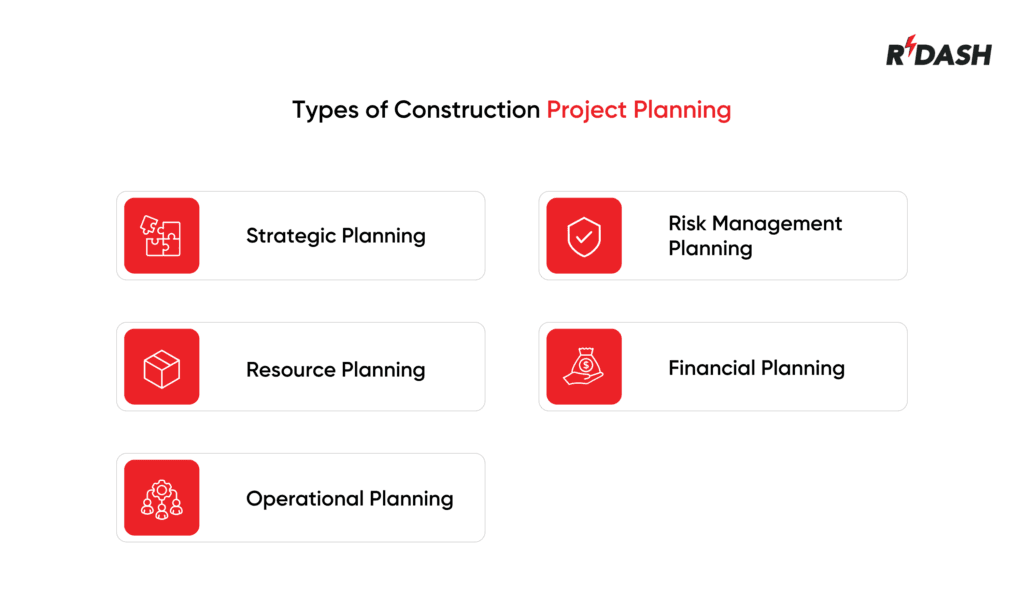
1. Strategic Planning
Strategic planning outlines the long-term vision and goals of a construction project. It includes feasibility studies, budget estimation, site selection, and regulatory approvals. This type of planning helps in defining the overall direction of the project before execution begins.
2. Operational Planning
Operational planning focuses on day-to-day activities and the detailed execution of the project. It involves scheduling work, allocating manpower, managing equipment, and ensuring that all tasks are completed as per the project timeline.
3. Resource Planning
This type of planning ensures that materials, labor, and equipment are allocated efficiently. Resource planning prevents shortages, delays, and cost overruns by optimizing the use of available assets.
4. Risk Management Planning
Risk planning identifies potential challenges and prepares contingency plans to mitigate delays, budget overruns, and safety hazards. It includes risk assessments, emergency response plans, and insurance coverage to protect against unexpected disruptions.
5. Financial Planning
Financial planning involves estimating project costs, securing funding, and managing expenses throughout the project lifecycle. This ensures that the construction project remains financially viable and within budget.
Who needs to be involved in the construction planning process?
Effective construction planning requires the involvement of multiple stakeholders, each playing a crucial role in ensuring the project’s success.
1. Project Owners & Developers
The project owner or developer initiates the construction project and oversees funding, approvals, and major decision-making. They set expectations, define goals, and ensure alignment with business objectives.
2. Architects & Designers
Architects and designers create the project blueprints, layouts, and aesthetic features to meet functional and regulatory requirements. Their input is crucial in developing a realistic and efficient project plan.
3. Construction Managers & Contractors
Construction managers and contractors handle the execution of the project, ensuring that construction activities align with the approved plan. They oversee labor, materials, and site operations to keep the project on track.
4. Engineers (Civil, Structural, MEP)
Engineers play a vital role in ensuring that the project is structurally sound and meets safety and compliance standards. They provide expertise in civil, structural, electrical, mechanical, and plumbing systems.
5. Procurement & Supply Chain Teams
Procurement teams source materials, equipment, and subcontractors to ensure smooth operations. They negotiate costs, manage supplier relationships, and coordinate deliveries.
6. Health & Safety Officers
Safety officers ensure that the project follows regulatory safety standards and best practices to prevent accidents and legal issues. They conduct site inspections, worker training, and risk assessments.
7. Government & Regulatory Authorities
Local government bodies and regulatory agencies issue permits, enforce zoning laws, and ensure environmental compliance. Their approval is required before and during construction to avoid legal roadblocks.
Construction planning best practices
To ensure successful project execution, construction planning must follow best practices that minimize risks and improve efficiency.
1. Define Clear Project Goals
Setting specific, measurable, and realistic goals helps align teams, budgets, and timelines from the start. This prevents miscommunication and ensures smooth execution.
2. Use Advanced Project Management Tools
Construction management software helps in tracking progress, managing documents, and coordinating teams efficiently.
3. Allocate Resources Efficiently
Ensuring adequate labor, materials, and equipment availability prevents delays and cost overruns. A well-structured resource plan helps optimize usage and reduce waste.
4. Conduct Risk Assessments Early
Identifying risks at the planning stage allows teams to develop contingency plans and prepare for unexpected issues like material shortages, weather disruptions, or safety hazards.
5. Maintain Strong Communication & Collaboration
Regular coordination between owners, contractors, engineers, and suppliers ensures that everyone stays informed about project updates. Clear communication prevents misunderstandings and errors.
6. Follow Compliance & Safety Regulations
Adhering to local building codes, labor laws, and environmental regulations ensures a legally compliant and safe construction site. Regular safety audits and worker training programs help reduce accidents.
7. Monitor Progress & Adjust Plans as Needed
Project managers should track milestones and make adjustments in real time to avoid delays. Regular progress reviews and status meetings keep the project on schedule.
Seamless Construction Planning With RDash
Effective construction planning requires a centralized system that keeps teams aligned, ensures real-time progress tracking, and eliminates delays. RDash offers an all-in-one platform designed to simplify construction project management, optimize workflows, and improve efficiency.
Centralized Construction Project Management
Managing multiple construction projects can be overwhelming without a structured system in place. RDash provides a centralized dashboard where teams can track project progress, manage approvals, and access all project-related data in one place. This eliminates scattered information and improves decision-making.
Task Scheduling
A well-planned schedule is key to on-time project completion. With RDash, project managers can assign tasks, set deadlines, and allocate resources efficiently. The platform ensures that every team member knows their responsibilities, reducing delays and miscommunication.
Real-Time Tracking
Staying updated on project status is crucial for avoiding delays and cost overruns. RDash enables real-time tracking of progress, materials, and budgets, allowing managers to identify bottlenecks early and make quick adjustments to keep the project on schedule.
FAQs
1. What is the main goal of construction project planning?
The primary goal is to outline project objectives, allocate resources, and create a structured workflow that ensures timely and cost-effective project completion.
2. How does project planning reduce costs?
Proper planning helps avoid delays, prevent material wastage, and optimize labor usage, leading to lower expenses and higher efficiency.
3. Why is real-time tracking important in construction?
Real-time tracking allows managers to monitor progress, identify potential issues early, and make data-driven adjustments, preventing major setbacks.
4. What challenges can arise without proper construction planning?
Lack of planning can lead to miscommunication, delays, cost overruns, resource shortages, and project misalignment, affecting overall profitability.
5. How does RDash improve construction project planning?
RDash provides a centralized platform for scheduling, tracking, and collaboration, ensuring that construction teams stay organized, efficient, and ahead of deadlines.

